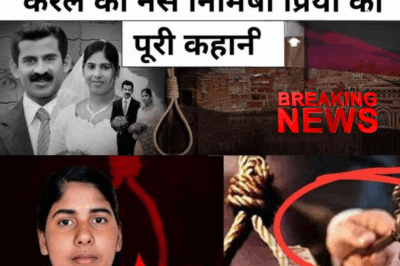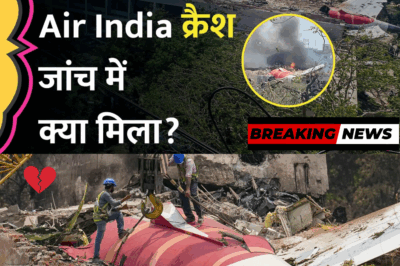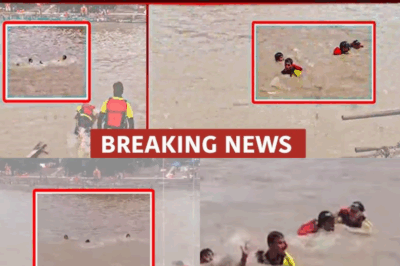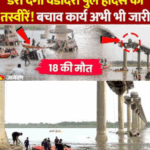Kedarnath: From Devastation to Rebirth – The Story of the 2013 Tragedy and Remarkable Recovery

A Sacred Journey Interrupted
June 2013 was meant to be a month of spiritual fulfillment for thousands of Hindu devotees. The Char Dham Yatra, a revered pilgrimage to four sacred shrines in Uttarakhand, was at its peak. Every day, families and individuals from across India flocked to the mountains, seeking blessings at temples nestled among the Himalayan peaks. Kedarnath, one of the holiest sites, was bustling with activity—lines outside the temple, people taking photos, performing rituals, and enjoying the cool mountain air.
No one could have imagined that within hours, this place of devotion would transform into a scene of unimaginable destruction. The events that unfolded in mid-June would become one of the deadliest natural disasters in India’s recent history.
The Deluge Unleashed
On the night of June 14th, 2013, light rain began to fall over Kedarnath. At first, it seemed normal—rain is common in the mountains. But by the morning of June 15th, the rain had intensified. Over the next 24 hours, relentless downpours battered the region. According to meteorological records, Kedarnath alone received around 370 mm of rainfall between June 14th and 17th—a volume typically seen over an entire month.
This unprecedented rainfall proved catastrophic. The lake formed near the Chorabari Glacier burst, releasing a deadly mix of water, ice, and rocks. The torrent raced down the valley with such force that everything in its path—bridges, roads, shops, hotels—was obliterated within minutes. The floodwaters surged towards the Kedarnath temple itself, catching pilgrims and locals completely off guard.
Chaos and Catastrophe
The sound of rushing water filled the air as panic spread. People ran in every direction, desperate to escape, but there was nowhere to go. The buildings surrounding the temple were swept away, pathways collapsed, and vehicles vanished beneath the mud and debris. Within moments, the valley fell eerily silent, the vibrant pilgrimage site reduced to a wasteland.
Yet, in the midst of this devastation, the ancient Kedarnath temple stood firm. Behind the temple, a massive boulder—later named Bhimshila—had rolled down and come to rest, diverting the flow of debris and protecting the temple from direct impact. Many called it a miracle, and Bhimshila has since become an object of reverence.
But the scene around the temple was harrowing. Some people took shelter inside the temple, while others were trapped outside with no way out. Many simply disappeared, their fate unknown as the deluge buried everything under mud and rubble.
The Human Toll
The scale of the disaster quickly became apparent. Roads were gone, electricity was cut, and mobile networks were down. The weather remained hostile, making rescue operations nearly impossible. Helicopters struggled to fly in the treacherous conditions.
According to official reports, around 5,748 people went missing and were later presumed dead. However, survivors and rescue workers believe the true number was much higher. Many bodies were never recovered, lost in inaccessible ravines or buried beneath tons of debris.
Entire villages vanished. The settlement near the temple was wiped out, along with hotels, shops, and dharamshalas (pilgrim rest houses). Thousands of families were devastated, some losing all their members. The disaster also scarred the land itself—river courses shifted, hillsides eroded, and the environment suffered immense damage.
During the rescue operations, tragedy struck again when an Indian Air Force helicopter crashed, killing over 20 personnel. The loss of these brave rescuers deepened the nation’s sorrow.
The Massive Rescue Effort
In the days that followed, the Indian Army, National Disaster Response Force (NDRF), and Air Force launched one of the largest rescue operations in India’s history. Over 20,000 people were airlifted to safety, while more than 10,000 received food, water, and medical supplies. Yet, many survivors endured days without help, suffering from cold and hunger. Some perished from exposure and starvation before aid could reach them.
Rescue teams worked tirelessly, pulling people out with helicopters, ropes, and even carrying them on their shoulders over treacherous terrain. Still, for many families, closure was impossible—loved ones remained missing, their fate a painful mystery.
The Aftermath: A Valley in Ruins
When the rains finally ceased and the debris began to be cleared, the true extent of the loss became clear. The Kedarnath temple had survived, but the settlement around it was gone. The old trekking route from Gaurikund to Kedarnath was destroyed, with landslides making the old path impassable. Everywhere, the landscape was littered with stones, mud, and remnants of lives interrupted—shoes, bags, and broken belongings.
The question on everyone’s mind was: Could Kedarnath ever recover? Would pilgrims return to this holy site, or was the valley’s sacred legacy lost forever?
Rebuilding Hope: The Road to Recovery
In 2014, a new government came to power in India, and Prime Minister Narendra Modi took a personal interest in the reconstruction of Kedarnath. He pledged not just to restore the site, but to make it safer and better than before.
A special agency was created to oversee the entire project. The first task was to clear the debris—a process that took months, as laborers and machines worked day and night. In places where machines could not reach, workers removed rocks and mud by hand.
Next came the challenge of rebuilding the route to the temple. The Border Roads Organization (BRO) was tasked with constructing a new, wider, and more durable path, complete with multiple bridges to withstand future floods. The temple itself was fortified with protective walls to shield it from any future deluge. The Bhimshila boulder, which had saved the temple, was fixed in place and is now worshipped by devotees.
By 2017, much of the area around the temple had been restored. New facilities for pilgrims were added, including toilets, medical tents, food stalls, and lodging. A public announcement system and 24-hour electricity were installed to improve safety and comfort.
A New Era for Kedarnath
In 2018, Prime Minister Modi visited Kedarnath to inspect the progress. He spent a night meditating in a newly inaugurated meditation cave, an image that quickly went viral. Plans were announced for a Vedic research center, museum, and a ropeway to further ease access for pilgrims.
The transformation was remarkable. In 2023, over 1.8 million devotees visited Kedarnath—a record number, surpassing all previous years. Pilgrims now find a site that, while scarred by tragedy, stands as a symbol of resilience and renewal.
Conclusion: Lessons from Tragedy
The story of Kedarnath is not just one of loss, but also of hope and determination. The disaster of 2013 tested the spirit of a nation, but the collective effort of thousands—rescuers, workers, officials, and ordinary people—brought the valley back to life. Today, Kedarnath stands not only as a place of worship but also as a testament to human endurance and the power of faith.
As visitors walk the rebuilt paths and offer prayers in the ancient temple, few would guess the scale of the tragedy that once struck here. Yet, the memory of 2013 serves as a reminder of nature’s power—and the resilience needed to rise again.
What are your thoughts on the Kedarnath tragedy and its recovery? Share your views in the comments below. If you found this article insightful, please like and share it with others.
News
Air India Flight AI171 Crash: 260 Dead, Investigations Underway, and the Wait for Answers
Air India Flight AI171 Crash: 260 Dead, Investigations Underway, and the Wait for Answers By Deependra Gandhi | July 2025…
Rising Crowd of Kanwar Pilgrims Raises Concerns Over River Safety: Incidents in Haridwar and Jabalpur Highlight the Risks
Rising Crowd of Kanwar Pilgrims Raises Concerns Over River Safety: Incidents in Haridwar and Jabalpur Highlight the Risks Haridwar/Jabalpur, July…
Targeted in Mumbai: A Woman’s Ordeal Highlights Intimidation and Identity Politics
Targeted in Mumbai: A Woman’s Ordeal Highlights Intimidation and Identity Politics Introduction Mumbai, India’s bustling financial capital, is often celebrated…
Tragedy in Haryana: The Murder of Tennis Star Radhika Yadav and the Shadows of Patriarchy
Tragedy in Haryana: The Murder of Tennis Star Radhika Yadav and the Shadows of Patriarchy Introduction On July 10th, a…
Shock and Mystery: The Tragic, Lonely Death of Actress Humaira
Shock and Mystery: The Tragic, Lonely Death of Actress Humaira Introduction: A Shocking Discovery The entertainment world was shaken to…
End of content
No more pages to load










